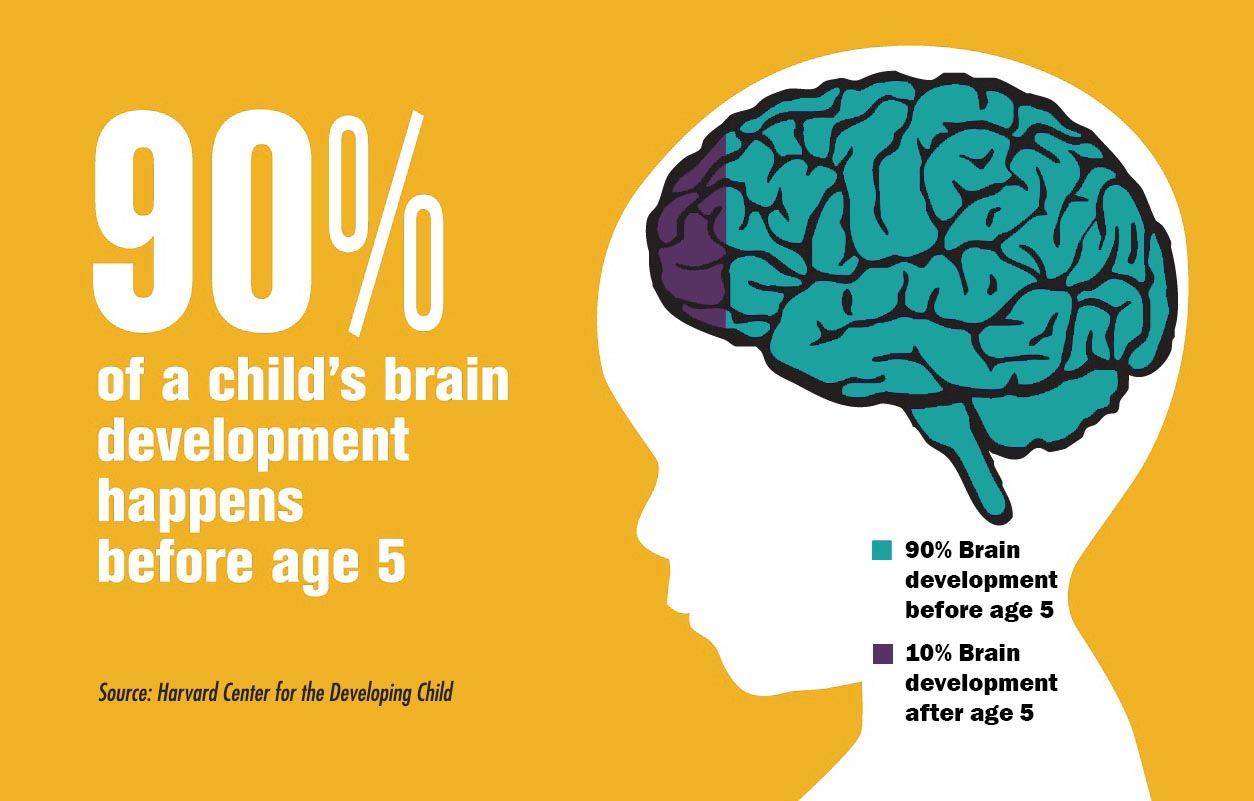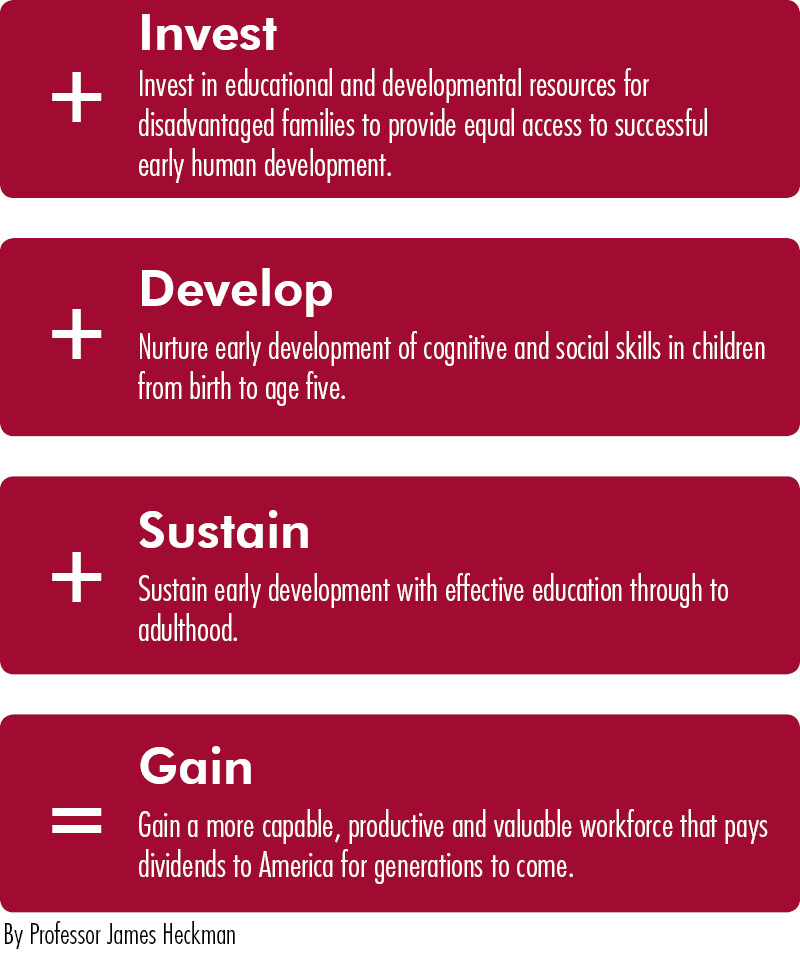Why Early Childhood Matters
Did you know that positive experiences, starting at birth, set the foundation for lifelong success?
A Solid Foundation
Studies from Harvard University show that early childhood is the most important time in life for brain development. 90 percent of a child’s brain development happens before age 5. In the first few years of life, more than 1 million new brain connections are formed every second. This development is critical to the foundation of all future learning.

Research from Center on the Development Child at Harvard University finds that early experiences are likely to have as much impact on health as on school achievement.
Brain architecture is constructed through an ongoing process that begins before birth and continues into adulthood. The quality of that architecture is influenced by early life experiences and creates either a sturdy or fragile foundation for all the capabilities and behavior that follow.
A fragile start impacts a child long term. Toxic stress and early trauma on the brain can greatly affect the healthy development needed for social and other skills like the ability to concentrate, impulse control, expressing emotions, relationship-building and the ability to positively participate in and
Adverse Childhood Experiences (ACEs) are negative events in a young child’s life such as poverty, abuse, parental divorce, parental death, or living with a family member with mental illness.
The State of Alaska reports 16 percent of children aged birth to 5 experience at least two ACEs.
As we age, the brain loses its flexibility, which is why intervening early is so important. Researchers will tell you that when it comes to brain circuitry, it’s better to get it right the first time than to try to fix it later. The good news is that high-quality early care and education gives children the strong foundation they need for success in life.

Critical Investment
Nearly 90,000 children under 13 years of age are potentially in need of early care and education services in Alaska. Therefore, investment in the early care and education industry plays a critical role in the state’s economy.
A 2019 local McDowell Group report shows that Alaska’s early care and education industry is unique in the breadth of its contribution to the economy. The industry supports: 7,700 jobs for caregivers and others.
- 1 in 6 of Alaska’s workforce with access to early care and education.
- A stable resident workforce that earns $2 billion in annual wages $512 million in economic activity annually.
- Economic benefits that far exceed costs
Business leaders have long understood the importance of a well-educated workforce to support a strong economy. A U.S. Chamber of Commerce report found that high-quality early care and education strengthens our workforce: increasing completion of post-secondary education, raising labor force participation, boosting workforce productivity, and helping business attract and retain talent.
Pay Now or Pay Later

Early preventative intervention is more efficient and has better outcomes than remediation later in life.
In 2015, a Vera Institute of Justice study found that the annual cost of an incarcerated prisoner to taxpayers was nearly $32,000 per inmate. Conversely, the average cost to taxpayers for a public school student was $10,600. Preschool in Alaska costs roughly $7,000.
Early care and education services create savings by government and society from reduction in crime, delinquency, reliance on welfare, lost wages, and health care treatment.
In national research, the Child Care Action Campaign found that for every $1 invested in high-quality early care and education, communities saved between $4 and $17 in future costs of remedial and special education, the juvenile crime system and welfare support.
Children who attend a high-quality early care and education program early in life have a strong foundation of cognitive and social skills, preparing them for school and making them more likely to graduate, attend college, contribute to the workforce, achieve higher earnings, and refrain from criminal activities.
Early care and education programs have been shown to have substantial benefits in reducing crime, raising earnings, promoting education and strengthening long term health. According to a recent Heckman Health Study points to evidence that high-quality early care and education and increased employment can reduce the incidence of costly chronic diseases such as hypertension, heart disease, diabetes and obesity.
Trust the facts – investing in early care and education provides children with a solid foundation to succeed. When we all invest early care and education, Alaskans can reap the benefits.
How to Invest
- Give to thread to support this important work
- Advocate on behalf of the industry
- Make sure you’re a family-friendly workplace

